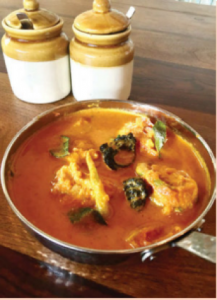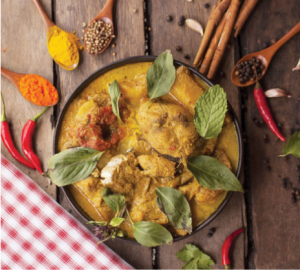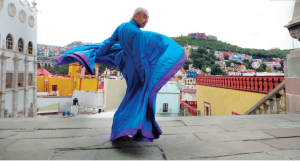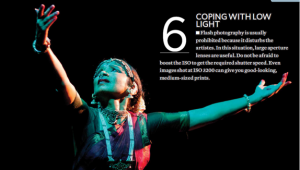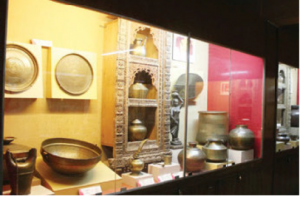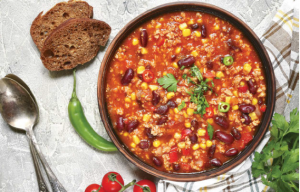The Ninth Edition of the Mahindra Adventure Monastery Escape in Ladakh tool participants on a 10-day adventure to some of the world’s highest motorable roads. “IT IS A MISTAKE TO…
The Ninth Edition of the Mahindra Adventure Monastery Escape in Ladakh tool participants on a 10-day adventure to some of the world’s highest motorable roads.
“IT IS A MISTAKE TO BELIEVE that the crucial moments of a life when its habitual direction changes forever must be loud and shrill dramatics, washed away by fierce internal surges. This is a kitschy fairy tale started by boozing journalists, flashbulb-seeking film-makers and authors whose minds look like tabloids. In truth, the dramatics of a life-determining experience are often unbelievably soft. It has so little akin to the bang, the flash, of a volcanic eruption that, at the moment it is made, the experience is often not even noticed. When it deploys its revolutionary effect and plunges a life into a brand-new light giving it a brand-new melody, it does that silently and in this wonderful silence resides its special nobility.”
As I sit down to pen my journal from the ninth edition of the Mahindra Adventure Monastery Escape in Ladakh, a couple of weeks after returning to urban life , I’m reminded of Pascal Mercier’s wise words above from his gripping 2004 novel Night Train to Lisbon. And on the pretext of not belonging to the sensational cadre, the voyage to the enchanting valleys of the Himalayas now comes across as a subtly, yet deeply, life-changing experience; matter-of-factly, it didn’t accompany a figurative bang or a flash.
But before getting to that, let me first draw a picture of the adventure that the Monastery Escape was. The 10-day motorsport-standard event gives both Mahindra and non-Mahindra owners the chance to experience the terrains en route some of the world’s highest motorable roads. Flagged off from Delhi, the convoy of 26 expedition-ready vehicles reached Leh via Manali, Jispa and Tso Moriri, at the half-way mark in the drive. I was a part of the contingent that joined the convoy for the second part of the trip, which was slated to then travel higher up the Jammu & Kashmir mountains — we were already around 10,000 ft above sea level, FYI.
The eclectic mix of participants on the journey had folks from all walks of life sign up for this exciting expedition. From newly-married couples and gentlemen who became friends after meeting for the first time on the trip to petrolhead neurosurgeons and female drivers who expertly steered these brawny 4x4s through the journey, you couldn’t have asked for a wider variety of people. We were introduced to the convoy, at our accommodation — Hotel Shangri La in Leh — where we were garlanded with traditional white khadasks (like stoles), before heading out past the Potala Palace to the Thiksay monastery next morning.
At a distance of 19km to the east of Leh, the largest gompa in Central Ladakh offers stunning views — sit down for a brunch here and you can thank us later for the recommendation. Another great option for your mid-day meal could be the delectable thin crust pizzas baked in wood-fired ovens at the nearby eatery Cafe Cloud. Warning: The area doesn’t serve any non-vegetarian food on no moon days (Amavasya); so foodies please plan your visit accordingly.
My assumption that I’d already clicked the best possible photographs for my Instagram feed was dispelled the minute I stepped out from the hotel later that evening. The sight of the gorgeous dusky skies made it easier to walk uphill to the old town local bazaar which, at first sight, looks like any other ‘Mall Road’ from North India’s touristy hill stations. It’s when you tread deeper into its maze-like lanes that you actually discover the soul of the desert city. Locals help you find the best places for momos and thukpas — quite literally run out of domestic kitchens — and the tiny bakeries owned by Kashmiris from further up north, who introduce you to fascinating new bread varieties that people of the neighbourhood consume during the course of the day.
Fetch a few of these to accompany the piping hot tea from one of the popular tea shops back in the main market, and the dropping temperatures, prompted by Easterly winds, would feel like an old ally. Talking of bakeries, there are a few more well-established ones on the other end of the market. Amusingly, some might pride in branding themselves as German bakeries, but their bread rolls are actually not bad.
Back at the accommodation, all participants were greeted by a delightful cultural show before they retired to their rooms. Local performers showcased various dance and music forms of the region. The jabro, usually performed on festive occasions, had the men and women groove to the tunes of a flute and a regional percussion instrument called damman. The centuries-old DrugpaRches dance had everyone tapping their feet alongside the dancers.
Having acclimatised for two nights, we were raring to lay our hands on the SUVs on offer the next morning. Our friends from Mahindra Adventure had handed out AWD Scorpios to each set of participants while there was a Getaway pick-up truck, the all-alluring Thar and a brave KUV100 for the media. As climbed into the Getaway, some fellow (automobile) journalists were certain that the best part of the drive was already behind them. Little did they know what lay ahead.
As the convoy bunched up to head towards Khardung La Pass (K-Top), the highest motorable road in the world, we came face-to-face with some treacherous terrains. As if the climb all the way up to 18,380 ft wasn’t tricky enough, the journey down proved to be even more challenging. I could almost hear my butt say thanks when the car’s tyres finally hit tarmac over the sand dunes of Nubra Valley, after hours of struggle on broken (sometimes nonexistent) roads. The day’s efforts paid off with some more striking views awaiting us as we retired at our serene campsite, with the Diskit Monsatery watching over us.
The convoy was supposed to take the same route back to Leh, but we were fortunate enough to get necessary permissions from the authorities to drive around the other side of the mountain past the Shyok Valley, which is otherwise a protected wildlife area. The lunch halt on the rocky banks of the Shyok River has to be the highlight of my trip. In the company of only nature, the meal, though without anything fancy on the menu, could easily have been among the best ones of my entire life.
The testing drive, in the KUV, thereafter culminated in truly breathtaking views at the top of the snow-capped Warila Pass, located at a staggering 17,427 ft. While we were running out of oxygen due to the altitude, there was no shortage of inspiration among the service and medical teams of the convoy to iron out the creases in testing times.
The final stretch of my journey rolled in the Thar,with a kickass off roader behind the wheel. In addition, we also encountered road repair and construction activities being carried out by the Border Road Organisation, famously known as BRO, whose prominently quirky signboards kept us entertained en route to Leh.
At the end of this phenomenal adventure, which also happened to be my first visit to the state, I’d been on two of the world’s highest drivable roads, driven through snow, gravel and off-roaded to the best of an SUV’s capabilities. The 2017 Monastery Escape was an escapade that stayed true to its rugged nature and induced the most amounts of adrenaline in my body in the longest time.
While on the flight back to Mumbai the next morning, a retired Wing Commander, who was also a member of the convoy, occupied the seat next to mine. We discussed the challenges in taking off at high altitude and even the daunting beauty of the mountains. As the aircraft looked over the exquisite Himalayas through the clouds, in a dreamlike state, moments before dozing off, I heard the peaks echoing the contents of a cheeky BRO signboard – ‘Dear I like you, but not your speed.
And while the adrenaline levels have certainly gone down a fortnight after the trip, what has subconsciously stayed with me is the slow-paced spirit of the mountains that has enlightened me to step back and breathe; look at my inner demons in the eye and make peace with them, with a ‘wonderful silence.’

 Our ongoing series in which we look at various Indian cities through the eyes of SpiceJet staffers. This month,Khushboo Gautam, Cabin Crew, holds forth on Jaipur.
Our ongoing series in which we look at various Indian cities through the eyes of SpiceJet staffers. This month,Khushboo Gautam, Cabin Crew, holds forth on Jaipur.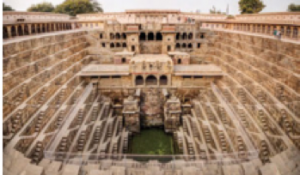 Best places to hang out: There is an open air restaurant called Padao in Nahargarh. When the weather is perfect, you can get an amazing view of Jaipur city from here, especially during the night time. Local attractions: The best tourist attractions in Jaipur that I can reel off right away are HawaMahal, City Palace, Nahargarh Fort, Sisodia Rani Garden, JalMahal, Amber Fort, Jaigarh Fort and Nahargarh Sanctuary. Each is unique in its own way and has made a mark on the world tourism map.
Best places to hang out: There is an open air restaurant called Padao in Nahargarh. When the weather is perfect, you can get an amazing view of Jaipur city from here, especially during the night time. Local attractions: The best tourist attractions in Jaipur that I can reel off right away are HawaMahal, City Palace, Nahargarh Fort, Sisodia Rani Garden, JalMahal, Amber Fort, Jaigarh Fort and Nahargarh Sanctuary. Each is unique in its own way and has made a mark on the world tourism map.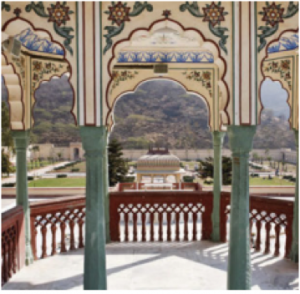 The people of Jaipur: There’s still a lot of bonding between neighbours — you can catch up with them over evening tea. Children help out during weddings, festivals and family functions. Overall, people here are helpful and down-toearth. Jaipur when compared to other cities: I come from a defence background, and hence have visited and stayed in a lot of places like Hyderabad, Kolkata, Chandigarh, Pune and Kota. But Jaipur is the gem of India
The people of Jaipur: There’s still a lot of bonding between neighbours — you can catch up with them over evening tea. Children help out during weddings, festivals and family functions. Overall, people here are helpful and down-toearth. Jaipur when compared to other cities: I come from a defence background, and hence have visited and stayed in a lot of places like Hyderabad, Kolkata, Chandigarh, Pune and Kota. But Jaipur is the gem of India